I have my feet up and I sit in my reclining chair. I’m watching my mother dog take care of her seven-day-old litter. I’ve gathered all the supplies for babies; toys, bowls, things to climb on, things to chew on, bells, whistles, towels, and beds. In the next 16 weeks, these puppies will be prepared to become Super Dogs and lead enriched lives for many years.
Today, each puppy will have six exercises for one minute each per puppy. This provides mental stimulation and encourages their brains to grow faster and gives them a head start over other puppies—just like we are now giving young children a head start in school. (Think of Sesame Street for puppies.) I’ll pick them up, roll them around, and hold them still, following the Super Dog plan developed by the US military.

As I watch Mom caring for them, I think back to the litters of farm dogs we had when I was a kid. We handled the babies, but that was about it. We’d bought the mother of those litters because the neighbor down the road had a litter and his girl was a sweet dog. We’d hoped her pups would be good farm dogs, too. When her litters were old enough, we gave them away to other farmers. I guess they worked out, as no one brought them back.
How things have changed. Today, health checking, healthcare, and careful selection of puppy buyers are the norm. Also, I now do my best to place the right puppy in the right home and make sure it has an early life of training and enrichment to optimize success in that specific home environment. I believe that this has improved the life of my dogs and has provided a better-suited dog for each new owner.
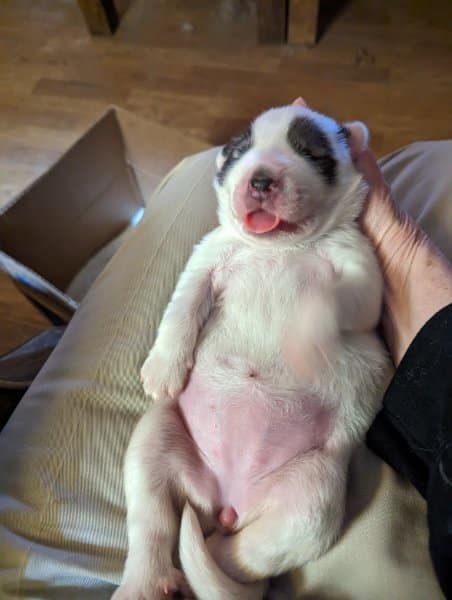
Early Farm Dogs
Seventy year ago, when we wanted a dog, we had a couple sources. Most involved local litters.
- A neighbor would have a litter bred from the male within a mile or so away. They were cute pups and the parents seemed like good farm dogs.
- A local bird hunter had bred his bird dog to another bird dog that the owner saw during a hunt.
- A working, sheep herding, guarding or scent hunting dog had a litter bred to a male the owner saw or heard about when he was working his female.
These dogs were all selected because they had a defined function and were good at that function. They were bred to males that were good at the same function, with the hopes that the puppies would be good at the function too.
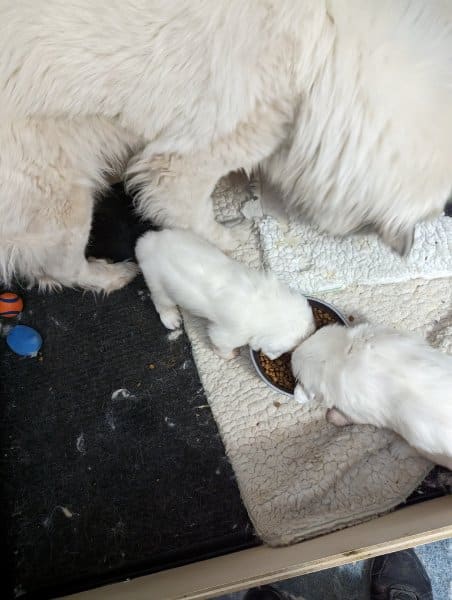
Puppies that did not show an aptitude for the desired function often met with a sudden end. There was no food or time for a dog that could not work. If a pair produced several puppies that did not perform, the parents were considered useless and might also follow the pups to a quick end.
My first dog was a farm dog. It barked at intruders, didn’t bite us kids, and kept vermin out of the house. She was usually bred to whatever local farm dog dropped by at the right time. Since the people living in the area all expected the same behavior from their dogs, the pups usually had the same traits in their behavior. They were okay with kids and kept vermin out of the house—and they barked. It was easy to assume the desired behavior was controlled by the genetics of the parents.
Perfect Parents made Perfect Puppies, except for throwbacks to a bad dog in the past. This view of inheritance is a belief not totally lost, even today. (A puppy can inherit genes from a dog that sired a litter in years past and is totally unrelated to this litter.) Notice that the environment for these puppies remained the same from farm to farm. They were being raised to be good farm dogs.
Guide Dogs
Many years later, I learned about puppy temperament testing. Guide Dogs for the Blind became important in the 1960s, and training organizations had determined that they needed to save money and only train those puppies that had a high probability of being successful in learning to be a guide dog. They also determined that the puppy at seven weeks old would have the basic behavior of the adult, and decisions could be made as to which puppies would be trained for the next year or two. Tests were designed to identify the best puppies… the best guide dogs
By the 1990s, there were many variations of the test procedures and the interpretations of the test results. The tests were being used for various purposes, including puppy selection for a specific family and even to match shelter dogs with the right forever home.
There are many quite good articles on the web that address the history and evolution of puppy temperament testing and which discuss the detractors who said the testing didn’t work. The adult dogs often did not have the characteristics predicted by the tests, particularly when the tests were used to predict pet puppy behavior after the puppy was moved to a new environment that did not match its early environment. Now that I think about it, this discussion sounds a lot to me like our elementary school testing today… but without the school.
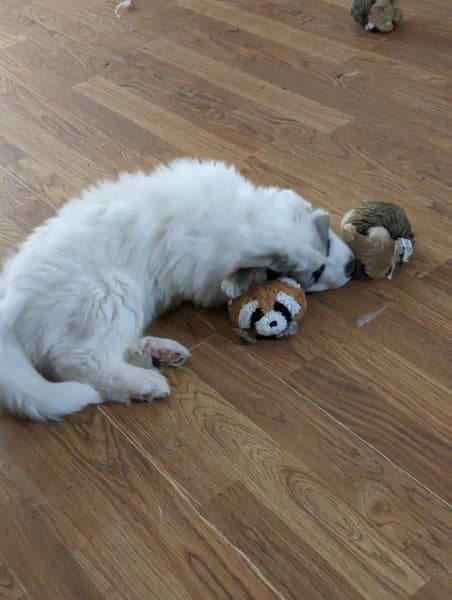
Puppy School Behaviors
Dogs are born with a few behaviors. They smell things, they recognize cold and hot, and they recognize up/down orientation. Dogs want to stay UP. They want to stay a comfortable temperature. They want to eat. If we touch the top of a puppy’s muzzle, they will push up to find a nipple. They have some movement, but it is directed at feeding and warmth.
Somehow, the puppy brain starts to acquire additional behaviors in those early days. They go to school when we aren’t looking! After about two weeks, they start to show behaviors associated with seeing, hearing, and more strengths.
It’s magic! They start to develop personality. At seven weeks, we take them off to test what we think they were born knowing—more likely, what they’ve learned from Mom, playing with littermates, and whatever early handling the breeder has done. There has been no standardized list of classes for them, no trained instructor, and no defined syllabus. But, we test and expect to see valid skills when we interpret the test results. Many people now say that puppy testing doesn’t work. They have many examples. The tests we now do aren’t based on a standard curriculum that is focused on a standard set of skills.
Perhaps we forgot to take into account the curriculum and that there are more than seven weeks in a puppy’s life of learning before we tested. Should we enroll these puppies in pre-school?
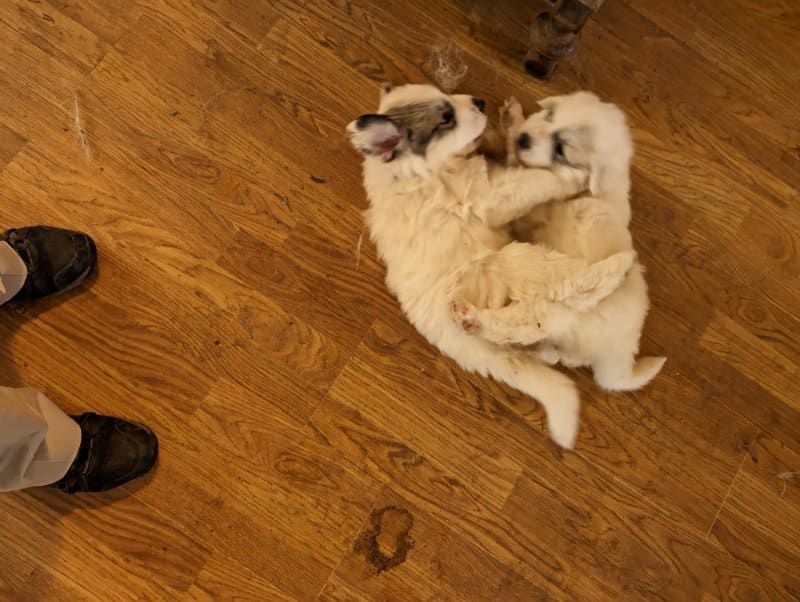
Lifelong Lessons
This is where the military stepped in to produce animals that would be better at military tasks. The adults needed to be flexible, mentally stable, cooperative, and quick learners. Since puppy temperament testing was losing favor, the military based changes made to its training methods on years of research into puppy learning. They observed that puppies were sensitive to sensory stimulation from 3 to 16 days old. With specific daily exercises, puppies had changes in behavior that lasted their entire lives!
A change toward tolerance to stress was lifelong with this early stimulation. This was measured by:
- stronger heartbeats;
- less variation in heart rate with stress;
- stronger adrenal glands which provide fight/flight reflex; and
- greater resistance to disease.
These data meant a dog was less upset during later training sessions, made fewer errors, and had calmer responses to the tests. These strengths remained for the entire life of the dog. The first period of life (3-16 days) prepared the puppy for learning. This became their pre-school!
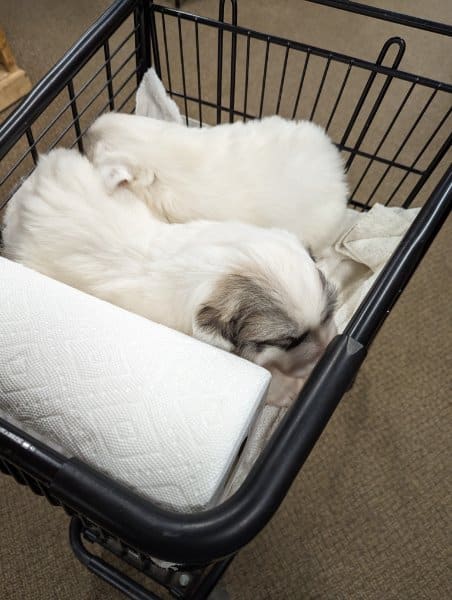
Socialization & Learning
The second period is socialization, between 4 and 16 weeks of age. Lack of handling, mothering, and interaction with people and littermates during this period resulted in not only lack of that continued learning but lack of the ability to learn social skills. With dogs, this often turns into digging, barking, chewing, and being hard to control.
Prior to the military research, many veterinarians had said not to remove the puppy from its protected area until it had the second set of shots, as late as 12-16 weeks old! Many trainers still say puppies should not be trained before they are six months old. They say to wait until then to introduce formal training for obedience or to do intense socialization. The puppies’ brains are not developed enough to learn the lessons. Oops! Now this 4-16 week learning window has been missed for socialization and enrichment. The puppy will now struggle to be socialized and learning will be harder for them.
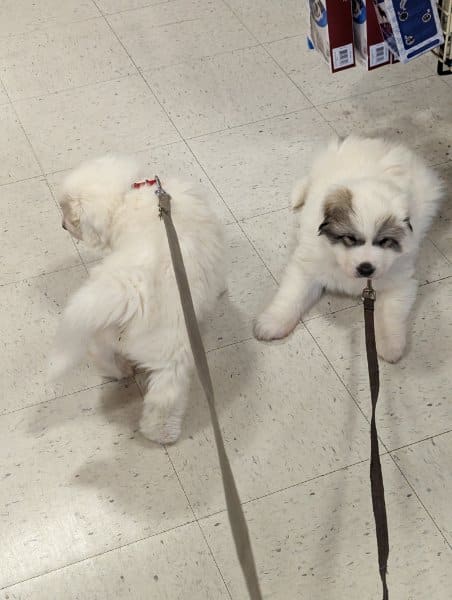
The third period for the puppy has no time limit and lasts from about 16 weeks for the rest of its life. During this period, the dog needs enrichment to keep its mind alert. The dogs raised in an enriched environment are more willing to explore and do better at difficult tasks. They need new environments, new skills to learn, and more access to explore and experiment. This actually reduces the stress the puppy experiences and improves its resistance to disease.
Well, I’d better get up from my recliner and do the puppy exercises. I also need to make a list of where the puppies will go to expand their environment when they are two weeks old. By four weeks, I’ll need friends to help me take them to visit dog friendly stores, ride in store carts, walk along sidewalks, visit other houses, and pick them up and love them.
While I’m taking care of these babies, maybe you can slip away and look up articles and books to read on raising Super Puppies. Humm some Sesame Street music while you rub little tummies.
May your own library become filled with information on enriching these little lives. I’ll be watching for you and your puppies. May they be the exact dogs you wanted!

















